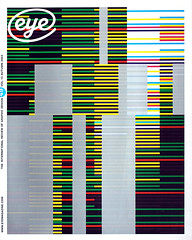Autumn 2003
The theatre that Swarte built
Toneelschuur
By Joost Swarte/Mecanoo Architects<br>Nai Uitgevers, €30On April 30 1995, the Dutch cartoonist Joost Swarte was miserably tossing around on his bed unable to catch a wink of sleep. He was distraught because that afternoon the director and some members of the board of the Toneelschuur Theatre in Haarlem had asked him to design their new building. He told them he needed a week to think it over because, obviously, this was a bit more complicated than designing the theatre’s logo and posters (which he has done for over a dozen years). But after a few minutes of contemplation he decided to accept. ‘And now he was tossing and turning,’ writes Jan Tromp in his introduction to the colourful, bilingual (Dutch and English) book, Toneelschuur, chronicling the collaboration between Swarte and the Delft-based architectural firm Mecanoo.
However, before I discuss the book, please ask yourself what cartoonist, indeed what sculptor, painter, type designer, art director, book reviewer or anyone with a creative ambition, would refuse to design not just the signage, tickets, programme or identity system (a nice gig in its own right), but a brand new theatre, inside and out?
Swarte has long been associated with Toneelschuur as the creator of its distinctive posters and eye-catching house-style, including identity and signs, for the original space – an old brick building that looked more like a hospital than an avant-garde theatre. In fact, I have collected many of these posters and other ephemera for years because they are destined to become as classic as theatre art by Toulouse- Lautrec, Mucha and Cheret.
Swarte’s style is an exuberant marriage of Hergé’s line, Kurtzman’s wit and Cassandre’s typography rolled into seamless comic tableaux. It is also, decidedly architectonic. Swarte’s compositions, which often involve buildings, cityscapes, futuristic landscapes and maze-like interior floor plans, are sometimes built on de Stijl-like grids that exhibit a need to frame his absurdities within order. Ergo, he was the perfect choice to design a building that had to fit harmoniously into an old historic district yet stand apart, as an island of contemporaneity. This, of course, has been a challenge for many modern architects, but Swarte is not an architect, he’s a cartoonist.
Nevertheless, Swarte embraced the experiment with gusto, and produced scads of ideas, including buildings that looked like stacks of the letter ‘T’ (in a perforated form this is the logo of Toneelschuur) to more Frank Gehry-like assemblages of disparate forms and materials, with lots of windows and transparencies. What a dream job. And what a nightmare to ultimately determine what will work or not, and what will be acceptable to a city that was at once trying to rise from the cultural shadow of Amsterdam and retain its own character. I shall not discuss the outcome of the project because, frankly, that is the treat of this handsomely designed book.
Books about architectural projects are often as dull as watching the patterns in stucco. However, this profusely visual document, interspersed with Swarte’s own drawings (including an especially intriguing sketch of the proposed restroom, which is an example of heroic Modernism on a functional level), photographs of the construction and end product, backstage and onstage views, and narrated by very readable essays, makes me feel like I’m engaged with Swarte throughout the entire process. Like the theatre itself, which opened in 2002, the book has a very human scale, and is especially revealing about the way a cartoon vision is transformed into a haven for culture.
Steven Heller, design writer and educator, New York
First published in Eye no. 49 vol. 13 2003
Eye is the world’s most beautiful and collectable graphic design journal, published quarterly for professional designers, students and anyone interested in critical, informed writing about graphic design and visual culture. It is available from all good design bookshops and online at the Eye shop, where you can buy subscriptions and single issues.

